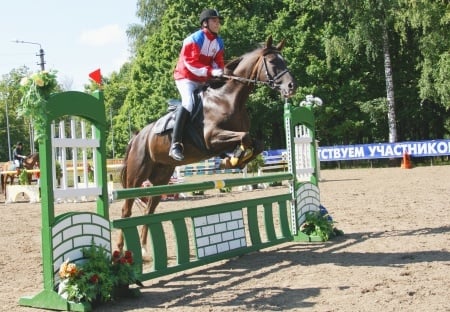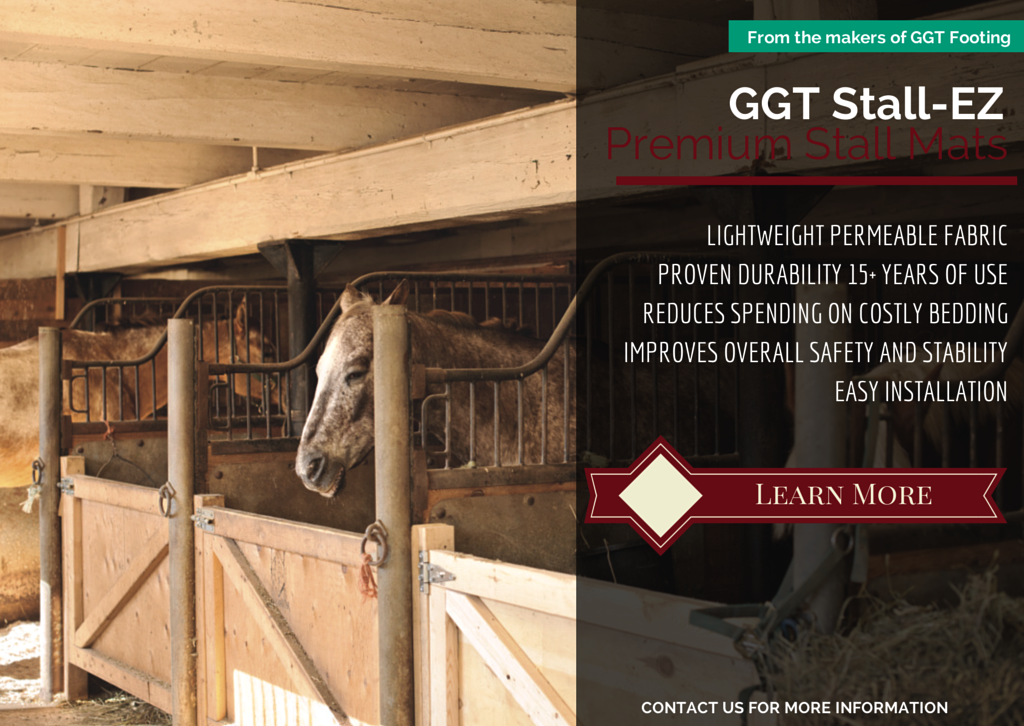The riding arena is the single most important asset in which a horse owner or equestrian facility will invest. Whether it is an indoor or outdoor, the most important component of that arena is the footing.
The arena itself can be as simple as a designated area sans fencing behind the barn, or as elaborate as a mirrored-wall, wainscoted, climate-controlled indoor facility with natural lighting, and acoustically perfect sound system, an observation deck and lounge areas. Regardless the comfort level of the rider that the various buildings provide, without proper footing, the facility is pointless, from the horse's point of view.
The term "footing" refers to the substance beneath the horses hoof. In the earliest iterations, this was simply the native earth, churned up to a specific depth with a harrow or disk, and groomed to an acceptable consistency and a level span, hopefully rock-free. And, for many municipal or public arenas, this is simply still all that is available. But it is not good footing.

As our knowledge of equine anatomy, kinesiology, and overall equine health has evolved, so too has our comprehension of what makes the best footing for these arenas for the athletes themselves - the horses.
As our knowledge of equine anatomy, kinesiology, and overall equine health has evolved, so too has our comprehension of what makes the best footing for these arenas for the athletes themselves - the horses. While footing selection has become a science, it can be simplified into two main considerations:
- Impact resistance - the ability of the footing to absorb/minimize/distribute the concussive forces of the hoof strike
- Shear resistance - the ease with which the footing is displaced by the rotational force of the hoof and the ability to provide adequate resistance for the push-off. (Think of the difference between walking on the sand next to the ocean where it is firm, or on the beach/dunes, where the sand is dry and deep)
Other considerations that may be more discipline-specific would include:
- Depth
- Dust content (more and more equine athletes are sensitive to environmental pollutants)
- Ease of displacement (important for reining)
- Stability of sub-strata (jumping, cutting)
While most footings have characteristics that will be suitable for any equestrian discipline - dressage, jumping, reining, cutting - most equestrian practices will be single-discipline barns, catering to a specific clientele. Footings selected for a specific discipline will result in healthier horses, greater longevity of the athlete, and a marketable asset.
In order to determine what the best footing for your purposes will be, a thorough analysis of your needs must be performed.
- What will be the primary purpose of your arena?
- Moisture controls: how much moisture you receive/prevent will determine which footing is best for your application
- How large will it be?
- Indoors or outdoors?
- Will it be fenced?
- What is the drainage profile of the site you have selected?
- Site preparation - is the ground level? Will grading be required?
- Element protection - covered, windbreaks, open?
- Maintenance equipment - do you have it? What kind?
- Budget
Once the general physical considerations have been determined, it's time to start researching your footing. We offer premium equestrian footing, and will asset you in deciding which is best for your needs.
We know arena building and footing selection is a process, and we are here to assist you - from breaking ground to tips on how to keep your footing in top condition. Please contact us with questions and to help you develop a preliminary plan for your facility.


